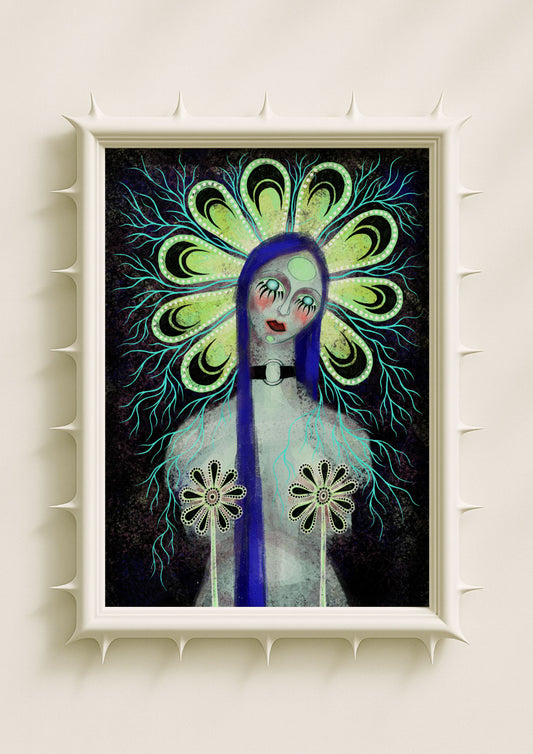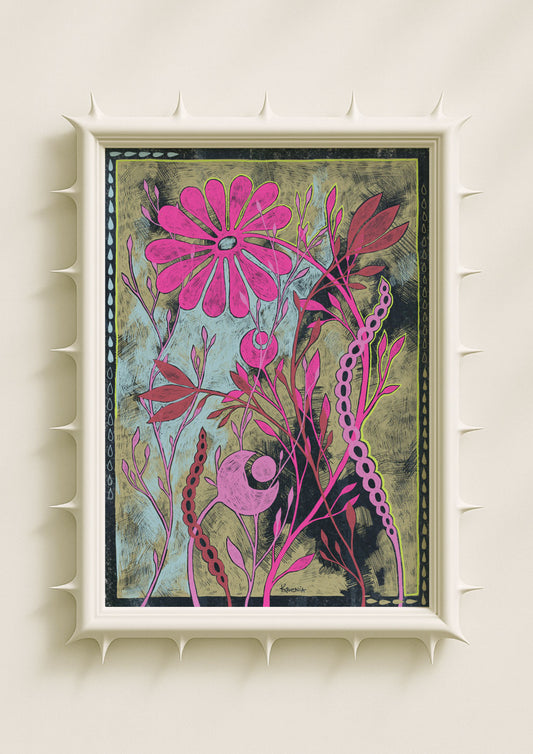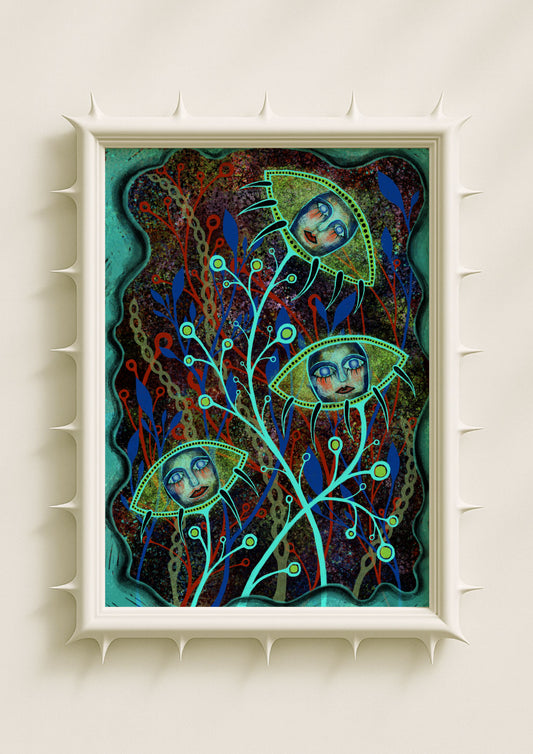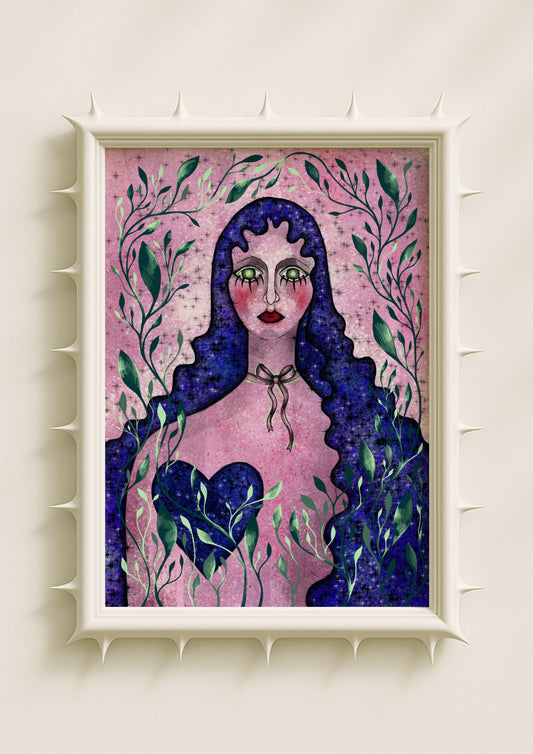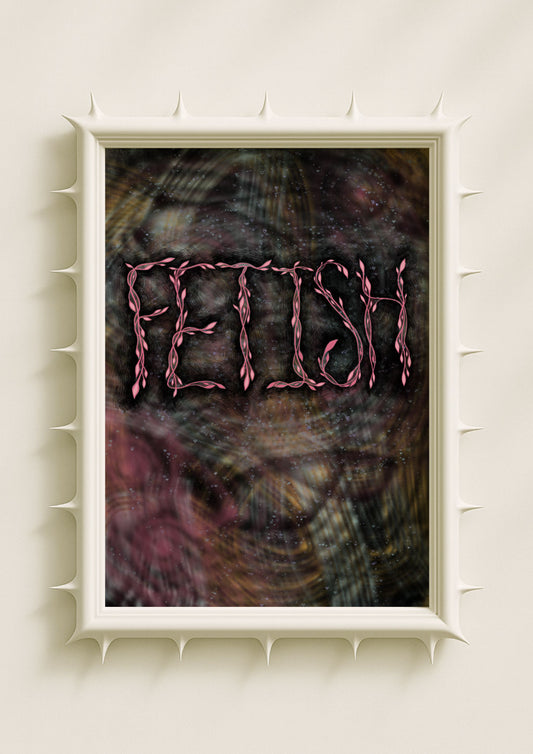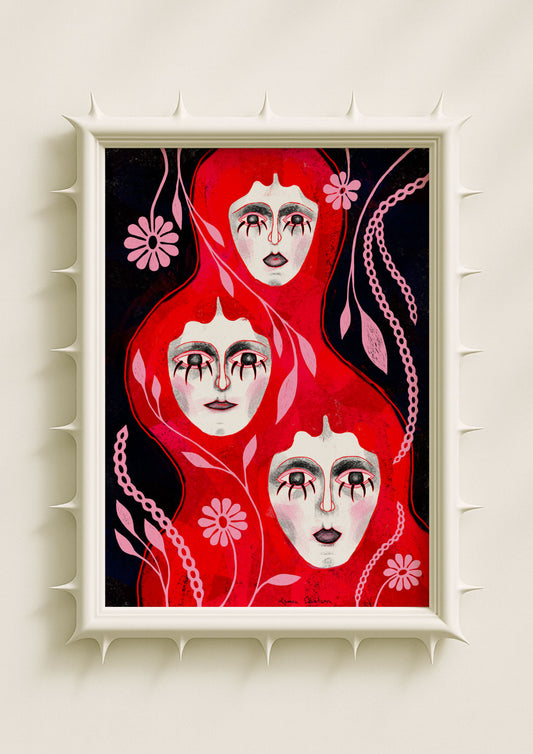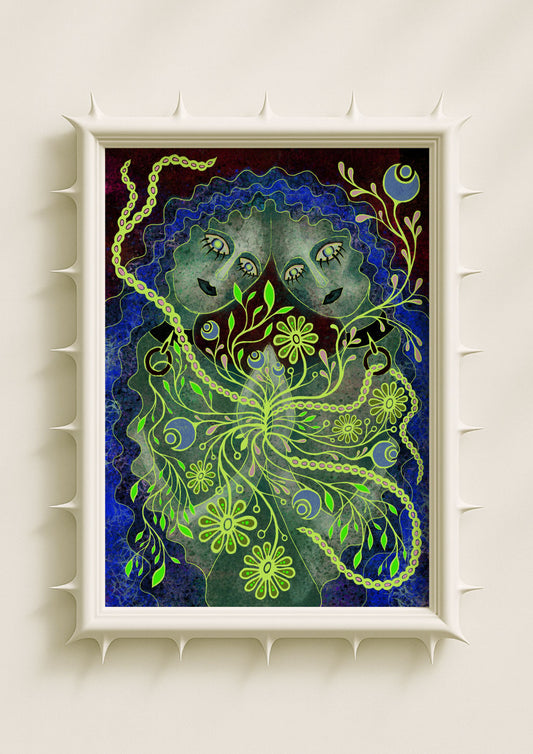Color as Emotional Language
Before a viewer recognises a face, a symbol or a flower, they feel the color. It arrives first — a pulse, a temperature, an atmosphere. When I work on an artwork or a wall art print, I think of color as the beginning of the story. Not a decorative choice, but an emotional one. A palette can whisper or burn, soothe or disrupt. It can reveal what the artwork is trying to say long before the viewer reads the details. Color becomes a language that doesn’t need translation.

The Calming Weight of Blues
Blue has an instinctive quietness. Soft blues settle into a room like a slow breath, while darker, ink-like blues bring gravity without heaviness. When I use blue in my portraits or botanical surreal pieces, it becomes a container for introspection. It suggests depth — not sadness, but a kind of emotional clarity. On a wall, blue art prints introduce a cool sense of order. They hold the space steady, especially in homes with minimalist palettes or modern furniture.
The Warmth and Strength of Reds
Red is rarely subtle, but it doesn’t always shout. In my work, reds often appear as accents — a flushed cheek, a petal glowing like a heartbeat, a contour that radiates warmth. Red is emotion made visible. It becomes desire, courage, heat, or vulnerability depending on the shade. Deep reds feel intimate. Bright reds feel urgent. Dusty reds feel tender. In interiors, red posters add momentum. They shift the emotional temperature of a room instantly, anchoring it with intensity.

Greens as Emotional Grounding
Green is one of the most complex emotional colors. It can feel wild, hopeful, eerie or serene. In my botanical pieces, green becomes a kind of emotional root system. Mossy greens feel like memory, soft and quiet. Dark forest greens carry mystery, especially when paired with surreal faces or elongated petals. Pale greens bring freshness, almost like morning light. When a green artwork enters a home, it creates balance. It softens hard lines and stabilises bold palettes.
The Soft Resilience of Pinks and Pastels
Pastel tones often appear in my work as skin, atmosphere or floral haze. Pale pinks and peaches carry vulnerability, but also strength. They have a protective softness, like the inside of a shell. They calm a composition, even when the subject is emotionally charged. These colors feel especially intimate in portrait posters. On a wall, pastel art prints add gentleness without losing complexity. They create emotional warmth without overwhelming the room.
Shadowed Purples and Melancholic Violets
Purple is the color of emotional twilight. It lives between warmth and coolness, between reality and dream. When I use violet or aubergine tones, I think of them as emotional fog — something in between clarity and mystery. In symmetrical portraits or surreal botanicals, purple deepens the sense of atmosphere. In interiors, violet posters add sophistication, especially in spaces that need mood rather than brightness. Purple lets a room feel contemplative.

Black, White and the Temperature of Contrast
High contrast shapes how emotion sits in the artwork. Black is not an absence; it’s a pressure point. It sharpens delicate features, intensifies florals, and grounds even the most surreal compositions. White, on the other hand, creates breath. It opens room for softness and space. Together, they build rhythm and structure. In a home, this contrast adds a graphic elegance. It makes the artwork feel decisive, even when the subject is dreamlike or fragile.
Color Combinations as Emotional Chords
A palette is rarely made of one feeling. Like music, it blends notes together. A blush pink next to a deep green creates tension and tenderness at once. Indigo beside pale peach makes the composition feel cinematic. Yellow against shadow adds a spark. When I create these combinations, I’m thinking not in terms of harmony but in terms of emotional chords — how colors vibrate together. As wall art, these chords influence how the room feels hour by hour, light by light.
Why Color Matters in the Home
People often choose posters by instinct. They don’t analyse every detail; they feel drawn toward something. That pull is usually color. A palette can make a minimalist apartment feel warmer, or make an eclectic living room feel more grounded. It can emphasise softness, or strengthen contrast, or add emotional depth to a quiet corner. Color shapes atmosphere more than any other element — and when a print carries emotional intent, the room absorbs it.
Color as a Way of Feeling Seen
In the end, color is more than visual pleasure. It’s recognition. Viewers are drawn to palettes that reflect parts of themselves — the gentle, the fiery, the contemplative, the hopeful. When I create art prints, I think of color as a way of giving emotion a visible body. Something that can live on a wall and still speak softly every day. In that conversation, the palette becomes more than aesthetics. It becomes connection.
